The cryptocurrency industry has achieved its current status thanks to technological innovation. From Layer2 to DePIN, from post-quantum encryption to ZKML, from homomorphic encryption 2.0 to adaptive consensus mechanism, these cutting-edge technologies and concepts are bursting with new vitality. However, in this encrypted jungle built by code, the security line is always under the test of sophisticated attacks.
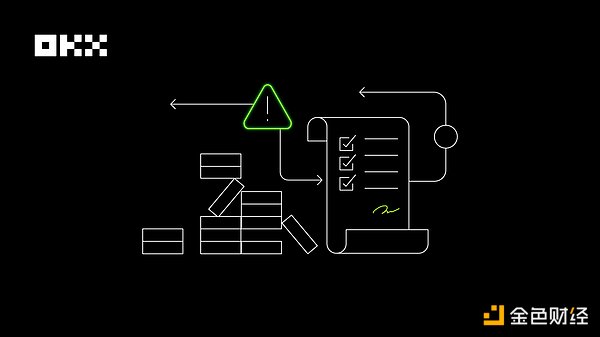
In the large-scale "on-chain Shura field" where "scientists" control MEV robots at millisecond speeds to accurately snipe transaction slippages, the smart contracts of Pixiu disk weave a cage of funds that can only flow in but not out, phishing websites disguise malicious authorization pop-ups as tickets to freedom, Chinese tools hide hijacking clipboards, Trojans that steal private data, local dog projects change their tricks to Rug pull, and star project parties delete and run away overnight, "safety is the most solid narrative to cross the bull and bear markets.
From the absurd farce of mnemonics running naked on the browser to the crypto security warnings shouted in the group chat, we often only pay attention to security issues when they occur, but this does not mean that they are not important. Because when you are on the chain, you can be unbelieving, but you must wear a "bulletproof vest". Being a little timid can help you live longer. We must realize that security DNA must evolve rapidly and trading tools must be selected correctly - in a decentralized world, real security depends on a stronger "trust infrastructure". Today, I will talk to you about the security capabilities of the OKX Web3 wallet in my eyes, covering token detection, authorization detection, DApp detection, private key protection, etc., and how it protects our on-chain transactions and asset security.
1. Malicious Token Detection
We deal with a variety of tokens the most, but we cannot identify their risks. Common malicious tokens include: Pixiu coins, phishing airdrops, and medium-risk coins. The first category is "Pixiu coins". These tokens can be bought on the surface, but cannot be sold smoothly, or they need to pay excessive taxes when they are sold, or they may even be unable to trade because the user is blacklisted. For example, users find out that they need to pay 95% of the sales tax after buying, or find out that the address has been blacklisted when trying to withdraw cash and cannot trade. The second category is "junk airdrops". This type of token has no value in itself, but may have the same name as valuable tokens, and is precisely airdropped to a small number of users for targeted phishing. Users mistakenly think that they have obtained valuable coins, but after buying them, they find that the depth of the token pool is insufficient, resulting in being locked in when exchanging, or they are Pixiu plates that cannot be sold, or hackers instantly withdraw the funds pool, leaving the user with nothing but air. When using the OKX Web3 wallet, I received the above two types of malicious tokens. I found that they would be automatically hidden, effectively preventing me from being misled by these junk tokens to trade. At the same time, the wallet will set the price of worthless tokens to zero, helping me quickly identify their risks and avoid careless transactions. In addition, if I try to trade these tokens through OKX DEX, the system will pop up a risk warning and intercept the transaction to further protect the safety of my assets.
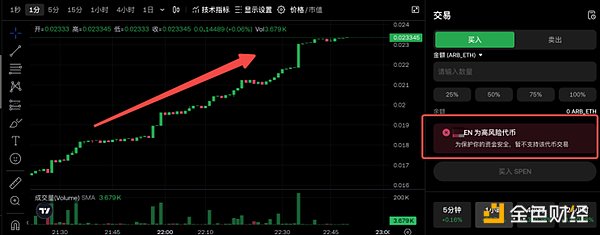
OKX Web3 Risk Token Transaction Protection Diagram
The third category is medium-risk coins, including low-liquidity coins, brush coins, and blacklisted user coins. Low liquidity coins mean that it may be difficult to sell them in the short term after purchase; wash coins inflate trading volume through frequent transactions to attract traders and eventually withdraw liquidity; blacklisted user coins only allow specific users to trade, misleading other traders. When encountering such a situation, the OKX Web3 wallet will set the price of the third type of risk token to zero and warn me of the risk.
Second,KYSRisk Identification
In addition to token transactions, the most common scenario for us to interact on the chain is to access DApps. Generally speaking, the steps for Web3 wallets to interact with DApps are usually upgraded as follows: Connecting wallets, authorization, transaction signatures, and confirming transactions.
We often encounter risks in the authorization process. For example, when trading tokens on DEX, we need to authorize the DApp to access specific tokens in our wallet and allow the DApp to perform operations on our behalf by signing transactions. In this way, we can avoid the need to re-authorize every time. The signing process is actually a confirmation of the transaction quantity, price, etc., to ensure that every operation is in line with our intentions.
The KYS risk identification function of the OKX Web3 wallet is similar to the traditional KYC mechanism, but it focuses more on monitoring and analyzing our transaction behavior, especially transaction authorization and signatures, to identify whether there are abnormal or malicious activities. Next, I must talk to you about those "authorization risk scenarios" and the "protection" function of the OKX Web3 wallet at critical moments.
Scenario 1: Give Transferring money to a "black address"
Have you ever had this experience? When transferring money, I didn't think much about it and just entered an address. In fact, I almost transferred money to an "ordinary black address". Fortunately, the OKX Web3 wallet popped up a striking red warning at a critical moment - "This transaction is risky", which avoided a loss.
However, what is more terrifying than the 'ordinary black address' is the "black contract". These addresses are often disguised as official contracts of popular projects, and the token names and icons are exactly the same, making it difficult for us to distinguish the real from the fake. Unlike the simple prompts of ordinary black addresses, when the OKX Web3 wallet detects interaction with a "black contract", it will directly intercept the transaction to ensure the safety of our assets and avoid the risks caused by misoperation. "
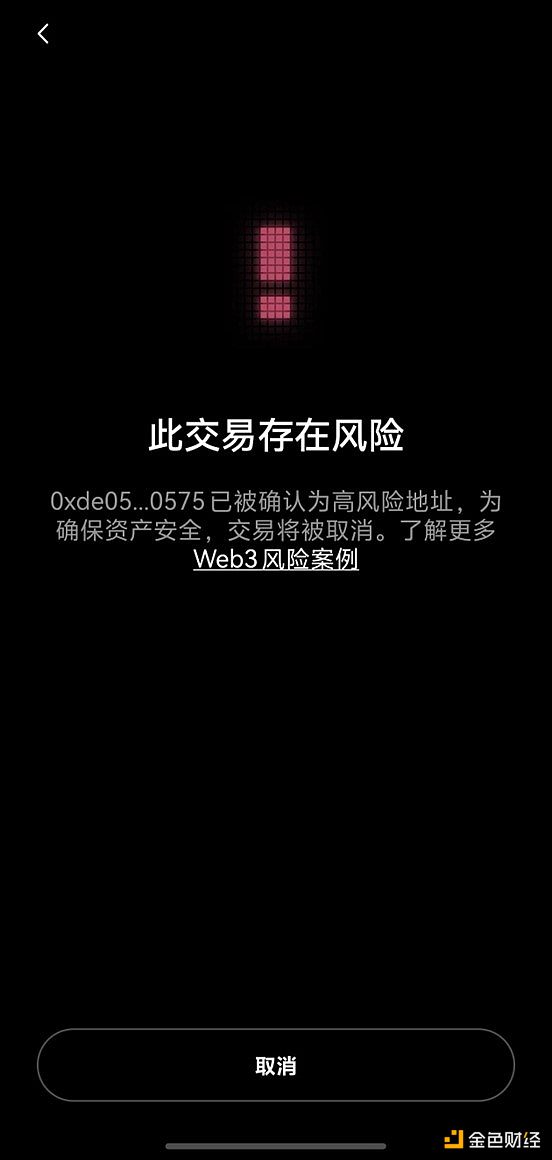
OKX Web3 wallet intercepts "black contract" interaction diagram
Scenario 2: Wrong authorization to EOAaccount instead of DAppcontract address
When we perform authorization operations, the authorization object should usually be the smart contract of the DApp, not the EOA account. If the authorization is given to the EOA account, it means that our wallet is authorized to another wallet/person, which is likely to cause asset risks. When I try to authorize the EOA account, the OKX Web3 wallet will issue an alarm, reminding me to carefully check the authorization object to avoid asset losses due to trusting the wrong object.
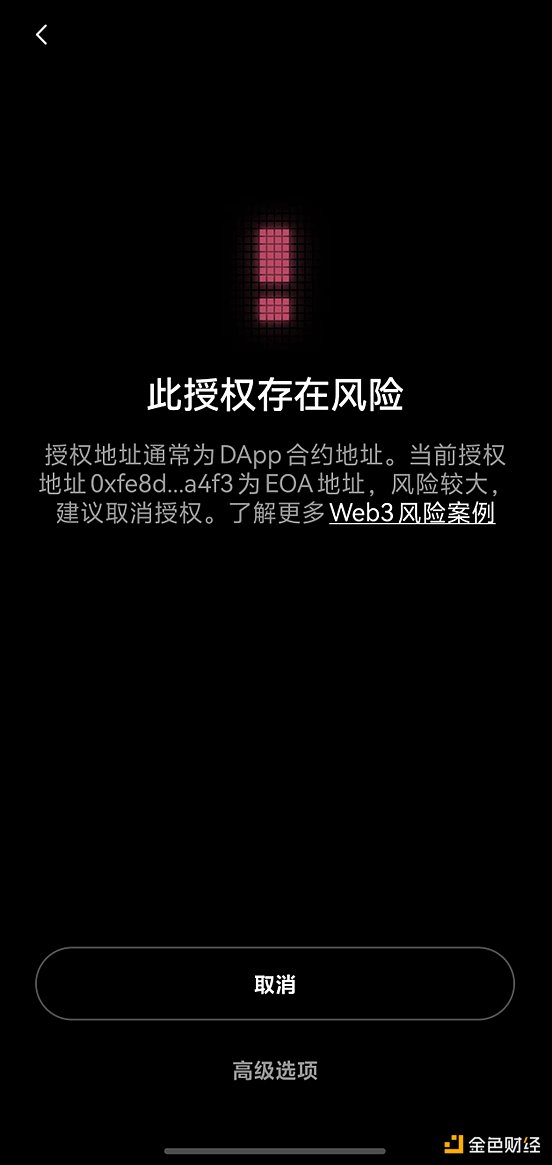
OKX Web3 wallet EOA authorization interception
Scenario 3: Transfer to similar addresses
Scammers often commit fraud by creating addresses that are highly similar to our commonly used interaction addresses, such as changing 0x1230...321 to 0x1238...32, inducing us to transfer to the wrong address. There is almost no difference to the naked eye, and many times we are deceived without paying attention. Fortunately, the OKX Web3 wallet will detect the similarity of the transfer address and issue a risk warning when an anomaly is found, helping us confirm the transfer target and avoid transferring funds to scammers due to negligence.
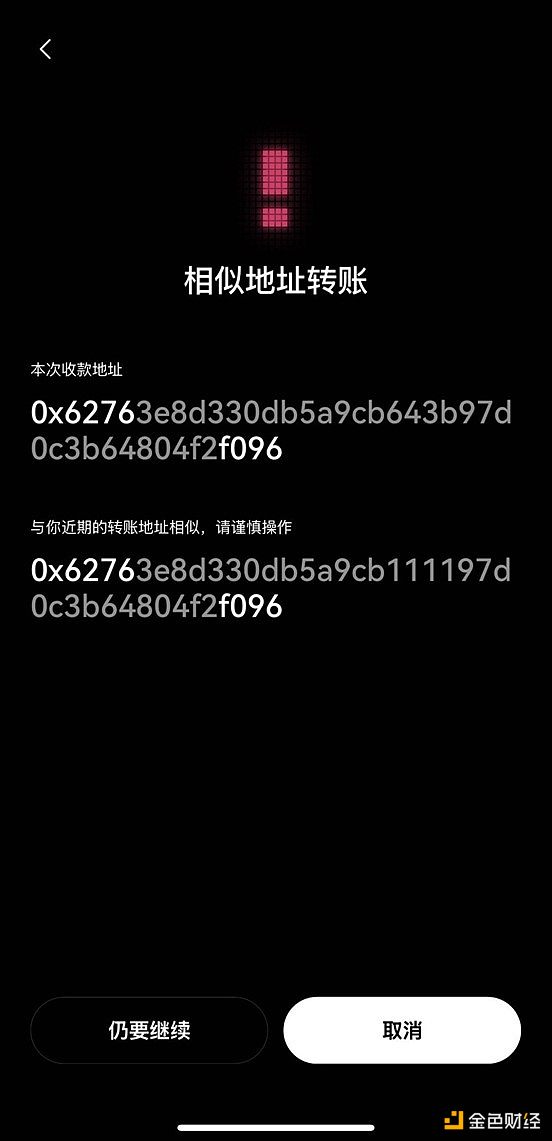
OKX Web3 wallet transfer to similar address warning diagram
Scenario 4: ETHSign Signature Risk
ETHSign is a signature method commonly used for Ethereum authorization or transaction confirmation. However, if the signature content is maliciously tampered with or used, we may inadvertently sign unsafe transactions, resulting in asset losses. To avoid such risks, the OKX Web3 wallet will issue risk warnings in a timely manner when users perform signature operations to help users identify potential threats to the signature content and ensure the security of each operation.
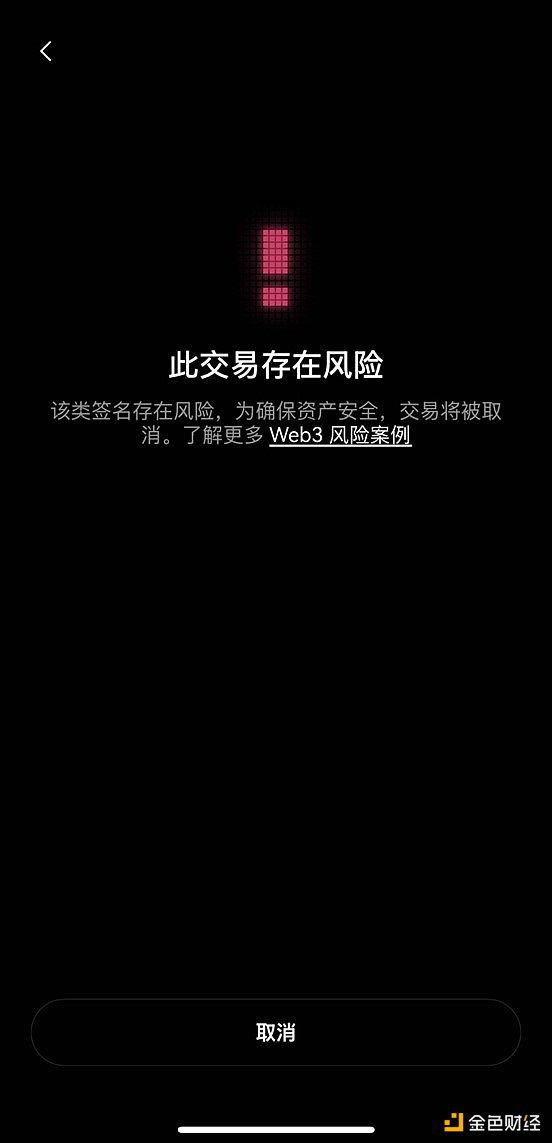
OKX Web3 wallet ETHSign signature risk warning diagram
Scenario 5: HexData hijacking on the TRON chain
On the Tron network, malicious actors may tamper with the transaction content by modifying HexData (the hexadecimal data of the transaction), causing us to perform unexpected operations. OKX Web3 wallet will monitor the modification behavior of HexData and issue risk warnings when abnormalities are found to protect the security of our transactions on the Tron network.

Schematic diagram of OKX Web3 wallet monitoring the modification behavior of HexData
Scenario 6: Purchase of "Malicious Tokens"
There is also the purchase of "Malicious Tokens". Let me explain briefly that "Malicious Tokens" may have built-in backdoors or traps, such as being unable to sell or automatically transfer user assets, and we are likely to lose funds after purchasing. When we try to buy suspicious tokens, the OKX Web3 wallet will issue a prompt and provide the option to cancel the transaction, helping users avoid falling into the trap of token scams.
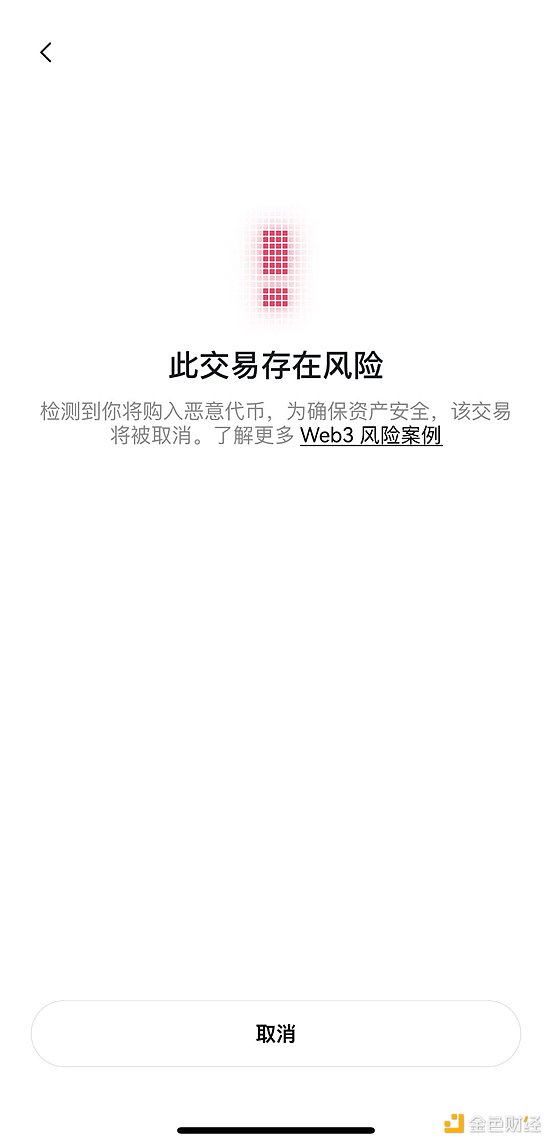
OKX Web3 wallet warns “Malicious tokens”Purchase risk diagram
Scenario 7:SolanaChange accountOwner
Playing MEME on the Solana network is too popular this year. If the Owner of our account is maliciously modified, it is very likely to lose control of the account and cause assets to be stolen. OKX Web3 Wallet will monitor the modification behavior of the account Owner and issue a prompt when risks are detected to ensure the security of our account.
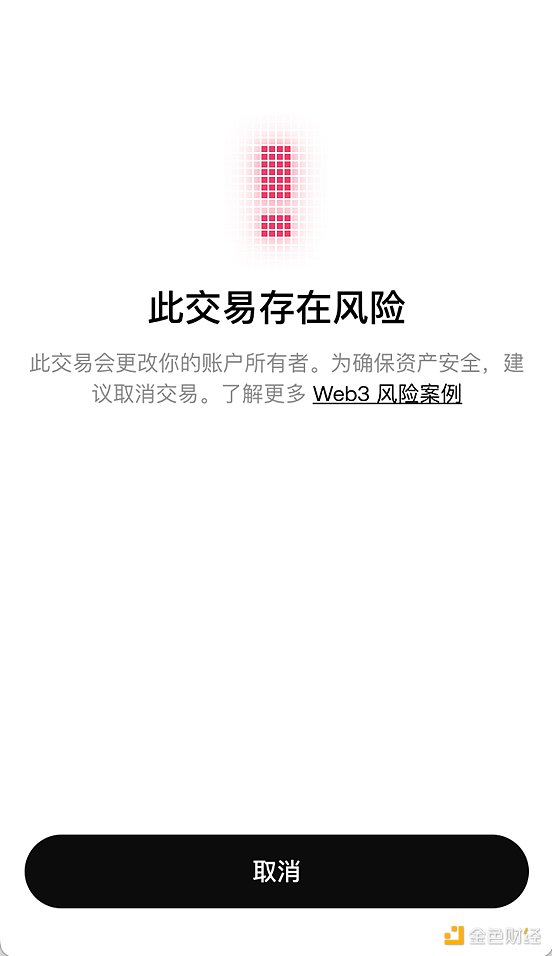
OKX Web3 monitors Solana's risk of changing account Owner
In addition to the above common authorization risk interception, OKX Web3 Wallet also provides security protection for other potential risk scenarios. For example, when "Calldata is changed to transfer operation to authorization" or "Permit signature authorization for non-whitelisted DApps", the wallet will issue a security warning in time to remind us to pay attention to the potential risks in the operation and ensure that each step of authorization is within a safe and controllable range.
3. Private key protection
In addition to malicious token detection and DApp authorization detection, OKX Web3 wallet has carefully designed protection functions for private key and mnemonic backup and export. Everyone must remember that safety comes first! Especially private key protection, because most of the assets are stolen because of private key and mnemonic leakage. OKX Web3 wallet has made super high standard protection, even screenshots and recordings of private keys and mnemonics are not allowed, completely avoiding the risk of information leakage. In addition, it also supports segmented replication of private keys to ensure that each link is safer, and hackers have no chance at all. At present, only OKX Web3 wallet supports this function. These measures are like putting "anti-theft doors" on our wallets.
Fourth, Anti-MEV Sandwich Attack
Sandwich attack is a common arbitrage behavior on decentralized exchanges (DEX). The attacker uses the visibility of transactions on the blockchain to insert two of his own transactions before and after the user's transaction to make a profit. Since transactions on the blockchain are public, the attacker can monitor the unconfirmed transactions in the memory pool (mempool). First send a transaction to increase the price of the target asset (if the victim is a buy order) or lower the price (if the victim is a sell order). The victim's transaction is executed as planned, but because the price has been manipulated by the attacker, he will buy at a higher price (or sell at a lower price). After the victim's transaction is completed, the attacker sells the assets he just bought to make a profit. OKX Wallet has access to many MEV protectors, and the mainstream MEME ecological network is covered to protect users from sandwich attacks.
V. Choose the right tools for safe transactions
In the crypto world, security incidents are not terrible, what is really terrible is our misjudgment in an instant. Every time I use the OKX Web3 wallet, I always feel that it is always a little faster than me, and can block my recklessness, greed and negligence in advance, helping me avoid unnecessary risks.
After several years of struggling in the currency circle, I finally understand what "risk control" is: it is not to eliminate all threats, but to make these threats appear, so that we can choose the right tools and improve security awareness. The OKX Web3 wallet is like a breathing "symbiotic armor" - it does not prevent me from touching the flame, but it will repair it the moment my skin is burned. Isn't this balance between danger and safety the coolest survival rule in the crypto world?
Only by winning safety can you win wealth and freedom.
Disclaimer
This article is for reference only. This article only represents the author's views, not the position of OKX. This article is not intended to provide (i) investment advice or investment recommendations; (ii) an offer or solicitation to buy, sell or hold digital assets; or (iii) financial, accounting, legal or tax advice. We do not guarantee the accuracy, completeness or usefulness of such information. Holding digital assets (including stablecoins and NFTs) involves high risks and may fluctuate significantly. You should carefully consider whether trading or holding digital assets is suitable for you based on your financial situation. Please consult your legal/tax/investment professional for your specific situation. You are solely responsible for understanding and complying with relevant applicable local laws and regulations.
 Miyuki
Miyuki















